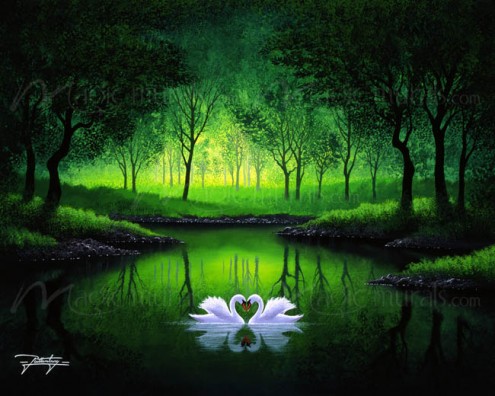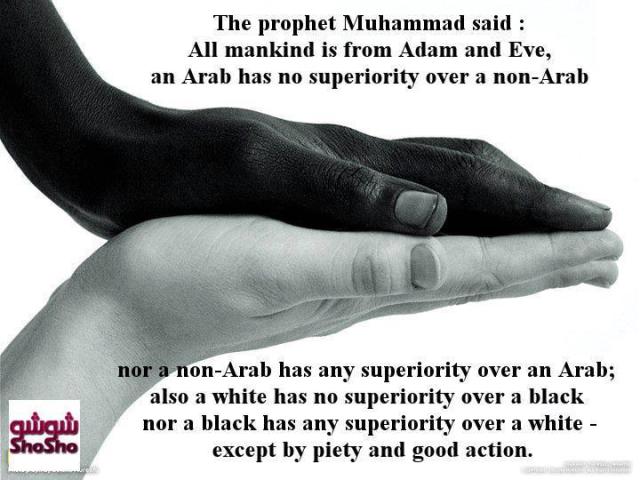What would happen if you took two people and teamed them up to accomplish a goal? Return a few months later, and you might find them working well together and getting the job done. Or you might find them at each other’s throats and accomplishing less than if they had worked independently.
An interesting puzzle lies between those extremes. Why do some partnerships succeed while others fail? Why do some people click while others clash?
One of the most neglected areas of human relationships is an understanding of what happens when two people team up to accomplish a task. Many books have been published to help readers understand themselves. Many more have been written about what makes a high-performing team or a great manager. But little has been done to guide two collaborators through their journey to reach a common goal.
People typically think of partnerships as formal arrangements, like the legal agreements between attorneys or between entrepreneurs. But a partnership — good or bad — exists whenever two people double up to accomplish an objective. Two students working on a term paper are partners until it is written. Two coaches of a kids’ soccer team are partners until the season ends. Two accountants assigned to complete a financial audit are partners until the work is done. Although poorly understood, these relationships are crucial to your success and happiness.
Humans are made for collaboration. Our blood pressure rises and falls based on whether allies or enemies are nearby. We eat similar amounts when dining together. We laugh, not so much because something is funny, but because laughter is a kind of social glue. (A person is 30 times more likely to laugh when he’s with someone else than when he is alone.)
One person observing another rehearses in his own mind what the other is doing. A network of “mirror neurons” throughout the brain creates the empathy we need to see the partnership from the other person’s perspective. We unconsciously adjust our grammar and word choices to match what someone else already said — a subconscious way of signaling “I agree with you.” This kind of mimicry, one study found, “is automatic and reflects the fact that humans are designed for dialogue rather than monologue.”
The mere presence of a collaborator alters a person’s perception of the world around her. When experimenters filled a transparent box with potatoes and asked volunteers to guess its weight, people who were told someone else would be helping them lift the box estimated it to be lighter than those who believed they would have to pick it up by themselves. “These results suggest we may see the world not only through our own eyes but also through the eyes of the groups we form,” wrote one researcher. “We plan our actions guided partly by what we think we can achieve with others.”
In a world that emphasizes individual achievement — the star salesperson, the MVP, the soloist — we forget that everyone is descended from millions of ancestors who survived because they didn’t go it alone. Today, failing to form partnerships will handicap your career and decrease your happiness. In the past, it could get you killed.
In the many dangerous generations that molded human nature, our predecessors’ survival required not only strong bones and muscles, resistance to disease, and the ability to make tools, but also the ability to collaborate — to discern, trust, sacrifice, empathize, and intelligently combine their work with someone else.
For our predecessors, survival “depended on dealing with their neighbors: sometimes helping them, sometimes ignoring them, sometimes exploiting them, sometimes liking them, sometimes hating them — and having a sense for which people warrant which sort of treatment, and when they warrant it,” wrote Robert Wright in his book The Moral Animal . “The evolution of human beings has consisted largely of adaptation to one another.” Hunters who worked together were more likely to return with a kill. Two men who made a pact to help each other improved their odds of fending off mutual enemies.
Along the way, humans developed exceptionally large brains, organs that are expensive in biological terms. The brain accounts for only 3% of the body’s weight, but it consumes 20% of the oxygen and glucose a person takes in. An organ that needy must justify its fuel bill, and it does. We need nimble, adaptable brains to navigate the terrain of our large and complex social networks. People “probably encounter no problems more challenging than those of dealing with other members of their community,” wrote one observer. “Judging whom to trust, forming alliances, keeping score of favors given and received — all were necessities made easier by greater cognitive ability.”
Yet for all our instincts, most of us today don’t fully exploit our collaborative potential. Gallup research reveals that the median number of work partnerships for an American employee is four, but there is a tremendous range around that number. When asked how many strong alliances they have, most people say they have one or two, maybe three or four. The small proportion of people who say they have dozens of close teammates raises the average for a population that is generally partnership-poor. “In thinking through my best and worst work partnerships, I keep seeing more experiences in the ‘worst’ column and a sparsely populated ‘best’ section,” said one manager at a medical device manufacturer.
The most common number of work partnerships — the answer given by 16% of the U.S. adult population — is zero! Asked if they have ever had a great partnership at work, about one quarter of employees say no.
The more partnerships you have, the better. Even one strong collaborative relationship markedly increases your wellbeing over those who are going it alone. Compared with their isolated coworkers, those with just one collaborative relationship are 29% more likely to say they will stay with their company for the next year and 42% more likely to intend to remain with their current employer for their entire career. Those who feel well teamed with one or more colleagues are substantially more engaged at work; they generate higher customer scores, safety, retention, creativity, productivity, and profitability for the business and a greater level of happiness for themselves. On the other end of the scale, isolation creates a health risk on par with smoking. Solitary confinement is considered by many a form of torture but many people impose it on themselves in their daily lives.
“The sad thing is that I’ve never had a successful partnership,” one businessperson said. “I’ve been thrown into the leadership role in every single ‘group project’ or organized group outside or inside of schooling. Every time, I have become the leader, ended up doing the majority of the work, and gotten the majority of the credit. I’ve learned — again, sadly — that I’m better at taking care of my responsibilities myself and not depending on others for creative success in my personal, artistic, or professional futures.”
One of the reasons partnerships fail is that every cooperative instinct is matched by a competitive reflex: deep-seated desires to not be taken advantage of, to come out on top, or to extract revenge. Not knowing what to expect from a new counterpart, every potential collaborator faces a friend-or-foe dilemma. While failing to work together was often fatal to ancient humans, so was being fooled by an adversary. Fearful of being made a fool or wanting to win, many people play it safe, failing to put enough of themselves on the line to start a collaboration. And when they do, their counterparts often fail to reciprocate.
But many people who are slow to make peaceful overtures are not afraid to go to battle stations at the first hint of hostilities. As a consequence, acrimonious relationships are at least as common as partnerships. Bickering over anything from office locations to a piece of legislation can collapse into years of animosity.
The double-edged nature of social instincts means that collaboration requires much more than just pairing up two people and pointing them up the mountain. When two companies sign a “joint marketing agreement” and team up their salespeople, some pairs inevitably fail. “In good relationships, reps work cooperatively, openly, and effectively as true partners,” found one study of joint sales efforts. “In poor relationships, reps withhold information from each other; point fingers when someone ‘drops the ball’; question the competence, integrity, and standards of the partner; and express a high degree of frustration with, and negativity toward, the partnering concept.”
Great partnerships don’t just happen. If both partners don’t really need the talents of the other, there is no reason to team up. If they lack a common mission — the foundation of any joint endeavor — the two will work at cross-purposes. If they don’t divide the work and rewards fairly, one of the collaborators will take his marbles and go home. Without a willingness by each of them take substantial risks, and reciprocation from both of them, they will never develop the rhythm of trust that defines collaboration.
The alliance will implode unless both learn to accept the idiosyncrasies of the other. If one of them betrays the other, he unleashes powerful, negative reactions, and the relationship can be extricated only with great difficulty. Unless partners learn to communicate well, they will eventually knock heads or make deal-wrecking assumptions about the other’s intentions. Failure on any one of these aspects can destroy the alliance.
In the rare circumstances when all these obstacles are overcome, partnerships can become not just effective in accomplishing the mission, but personally rewarding — sometimes intensely so. Researchers call this “mutuality,” a phenomenon when a natural concern for one’s own welfare transforms into a deep satisfaction in seeing one’s counterpart do well. Those who have reached this level say such collaborations become among the most fulfilling aspects of their lives. It is one thing to have accomplished a great goal alone, they say, but these individual achievements cannot compare to doing great things together.
Ultimately, the same cooperative instincts that allowed our distant ancestors to survive can bring greater success and happiness to us if we apply them in our most important undertakings.
“Behind this phenomenon is a principle: Build on your strengths. To mitigate your weaknesses — and we all have them — partner up! Find your complement.”
Everyone faces challenges where success is anything but certain. If you overcome them, chances are, you won’t do it alone.
by Rodd Wagner and Gale Muller
Live and Learn. We All Do.
Thanks for reading. Please pass this on to someone who means something to you.
Please don’t forget to leave a comment.
Filed under: Uncategorized Tagged: Academy, ancient egypt, children, Collaboration, consciousness, education, enlightenment, health, human, humanity, Interpersonal relationship, life, live, love, Moral Animal, nature, Partnership, philosophy, Robert Wright, Science, Social Sciences, United States, universal, youtube.com
via WordPress http://roxcell.wordpress.com/2013/01/23/the-power-of-two/



